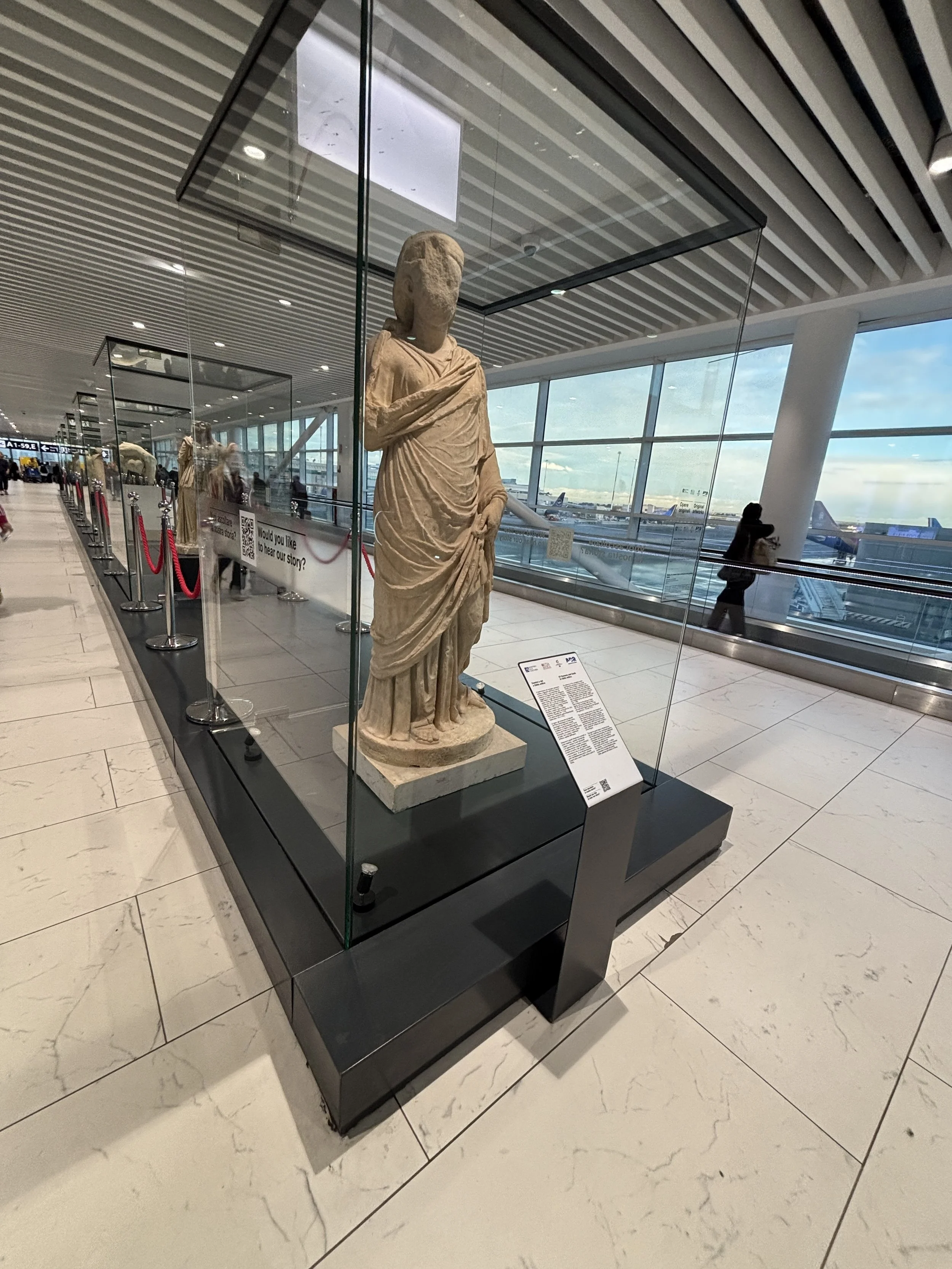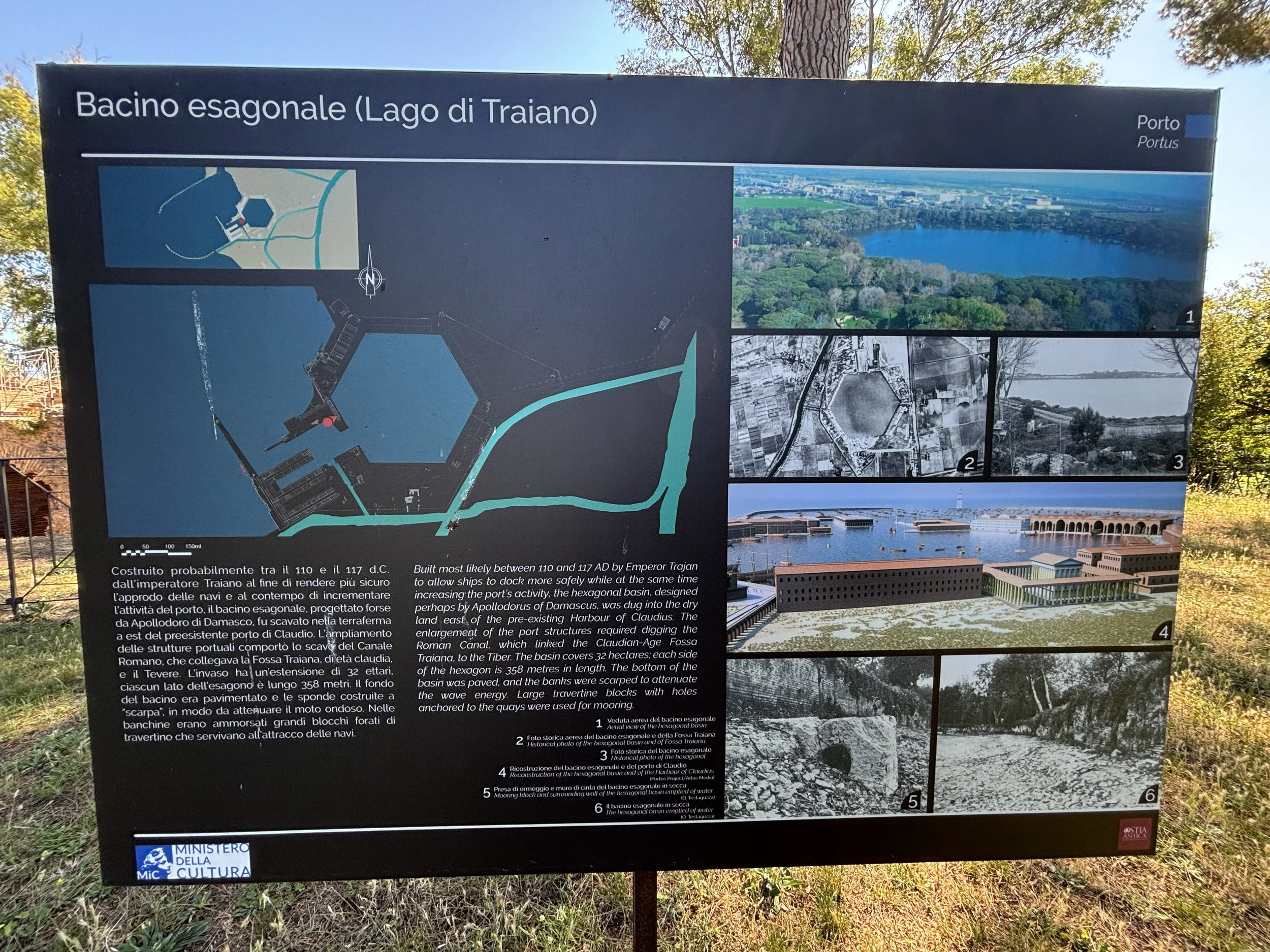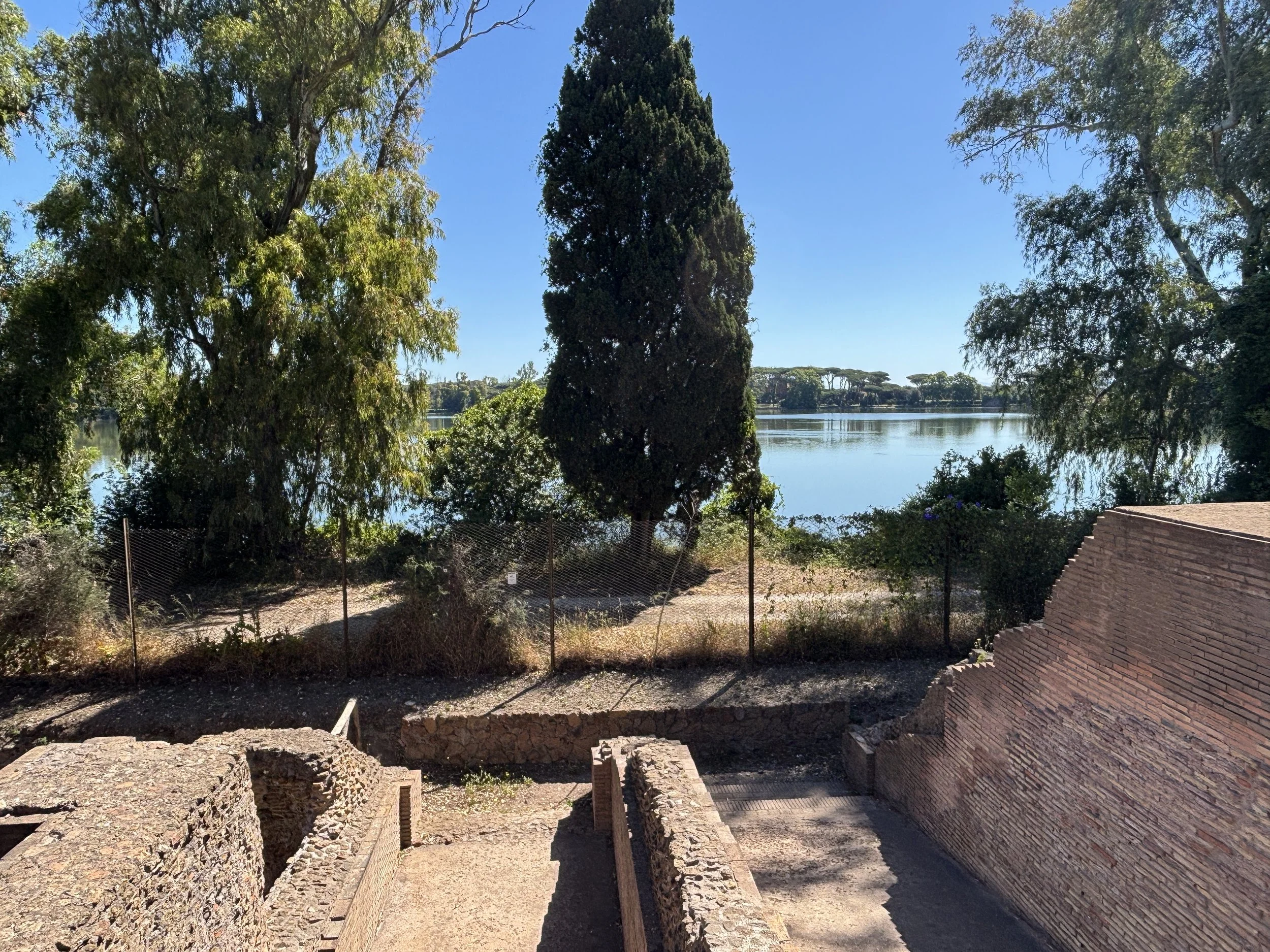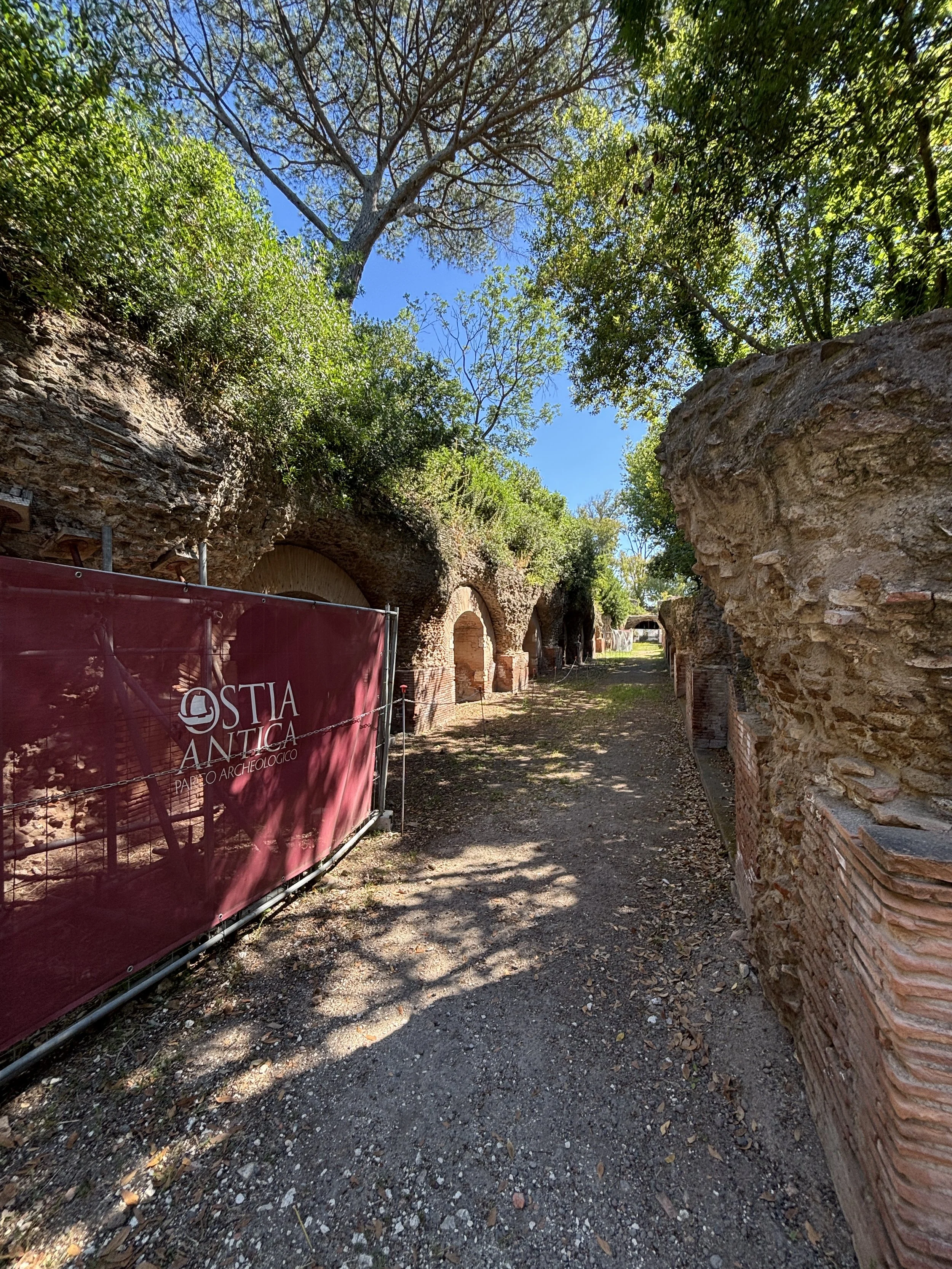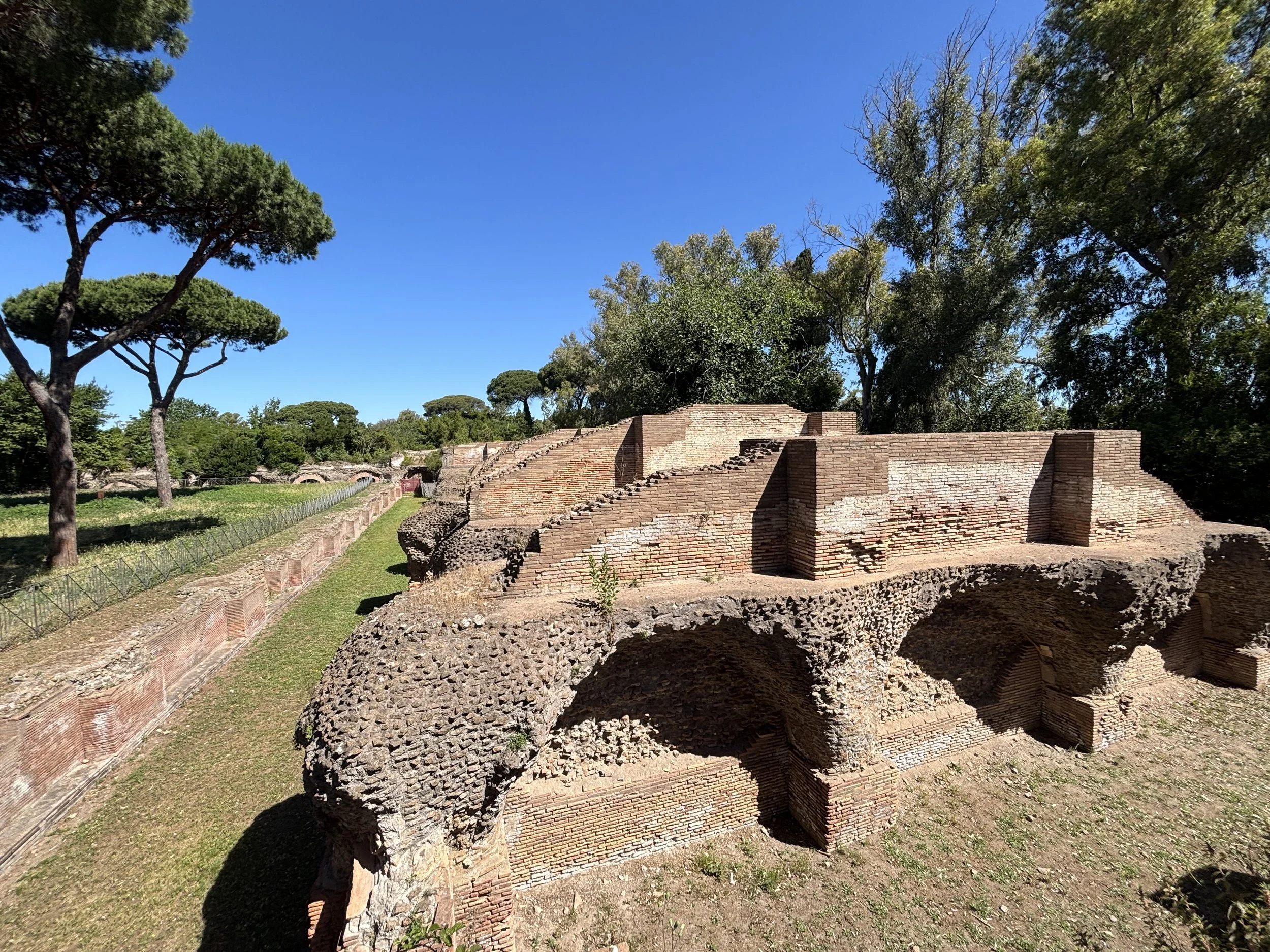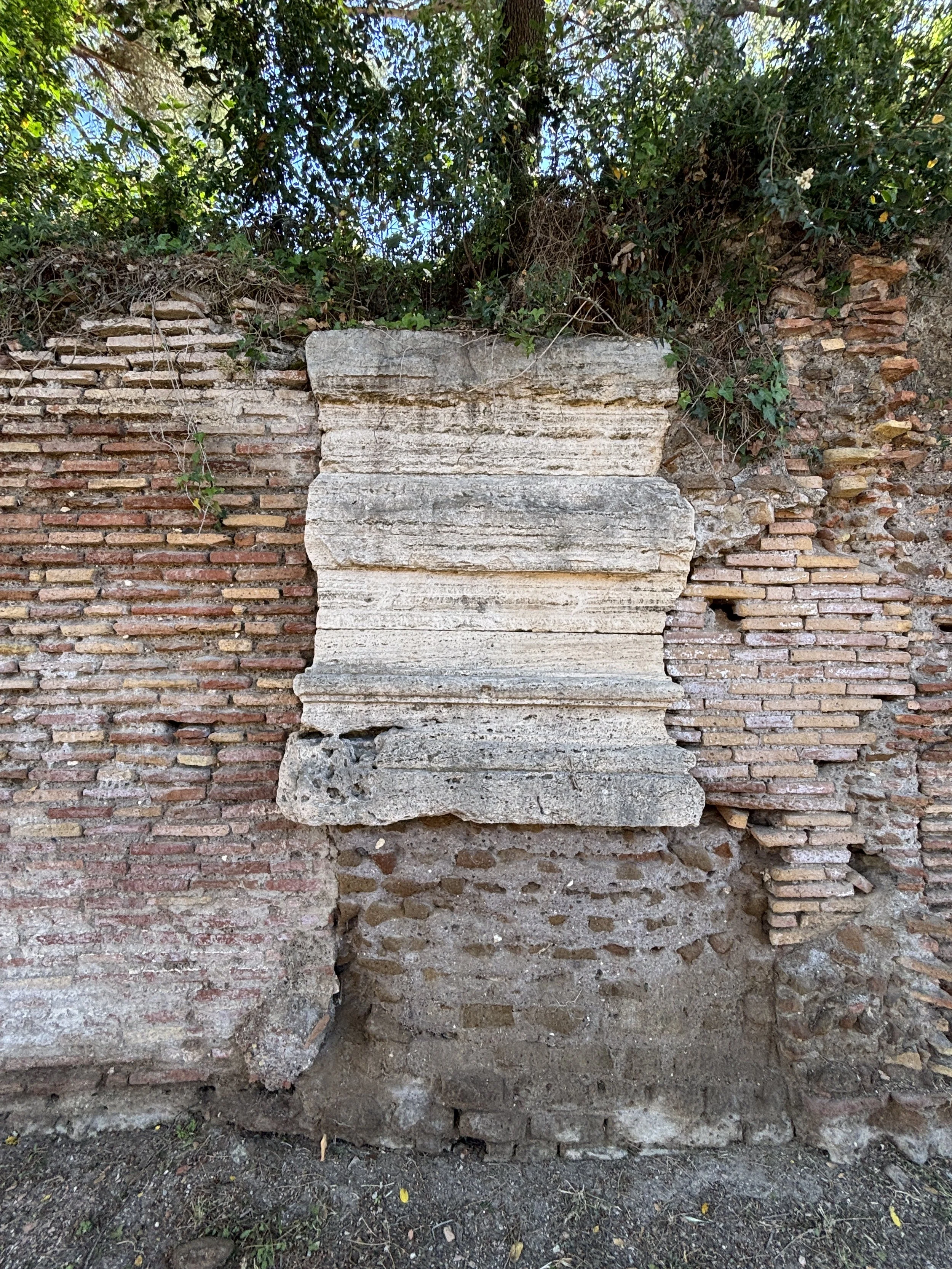Things to do around Rome on a Fiumicino stopover: visit Portus
Leonardo da Vinci-Fiumicino International Airport (FCO) is not just Rome’s main airport, but also a major air hub and the main base of flag carrier ITA Airways.
Fiumicino airport showcasing local heritage
There is, thus, a significant number of people that transit through Fiumicino every day, but I guess not that many of them are aware that, provided the stopover is long enough, they have the chance to visit a top archaeological site less than a mile away: the Ancient Roman harbour of Portus.
Remarkably, not unlike Fiumicino today, back in its time Portus was Rome’s major transportation hub.
The Romans may have built the greatest empire the Mediterranean has ever seen, but the city in Rome, while close to it, is not quite on the sea!
In fact, Rome’s gateway to the sea was Ostia, at the mouth of the river Tiber and also not far from Fiumicino airport.
What remains of that ancient seaport, Ostia Antica, is now a major archaeological site.
However, Ostia started to silt up already in Roman times, so, in order to ensure continued access to the sea and to accommodate the growing logistical demands of an expanding empire, during the reign of Emperor Claudius (1st C. AD) the Romans built yet another port a bit further north: Portus.
Just as today’s major airport hubs, which are built part for function and part to impress, Portus was built with some pretty impressive features, including a massive hexagonal basin connected to the sea via a newly dug canal and a number of support facilities that encapsulated the state-of-the-art technology of its time, to load, unload and store goods and forward them to nearby Rome and the rest of Europe.
Ancient Portus was, in many ways, a purpose-built, avant-la-lettre multi-modal transport hub!
How to get to Portus Archaeological Site from Fimucinio Airport
While close to each other, both archaeological sites are, however, not physically connected, so, unless you a a total hardcore Roman history fan and have an extremely long stopover and a large budget for taxis, I would say it is not very practical to visit both in one go.
Of the two, Portus is the closest to the Fiumicino terminals and, as far as I am aware of, the only one that is relatively easy (with some nuances as we shall soon see) access in public transport.
You can, of course get a taxi or Uber (the driving time is quite short), but pricing can be quite high, even if the distance is short. You can expect to pay on the order of €30 or more for each leg of the ride.
Since my ITA Airways stopover at Fiumicino was around 6 hours long, I opted to visit the archaeological site of Portus only and, to add, a bit more thrill to the adventure, to do so by public bus.
I even considered briefly the idea of walking to the archaeological site and, while this is not entirely unfeasible in terms of distance, I was discouraged from doing so because the route is traversed by several motorways, roads and undeveloped land, which would make it rather unpleasant or even plain dangerous.
So, it was going to be by bus.
The first thing to do, though, was to leave my bag at Fiumicino’s luggage storage facility. This is located right outside the arrivals area at Terminal 3. There is a flat fee per item, whether you leave it for 10 minutes or 24 hours and regardless of the size or weight. The system is quite efficient, though.
So, after the luggage was sorted, it was a matter of finding the right bus.
I went to ask to the tourist office at the arrivals area of the airport and, while they didn’t appear to be very sure about the optimal way to get to the Portus Archaeological Area from the airport, they suggested me two options:
To get a free airport shuttle that stops at the “Museo delle Navi Romane”, a small museum located just outside the airport perimeter which houses two Ancient Roman ships which were found in the area. In addition to being free, this option had the added bonus that it allowed me to visit the said museum, a good complement, I guess to the visit to the ancient port. The problem, though, is that the “Museo delle Navi Romane” is still some way off the Portus Archaeological Area. I would still need to walk two thirds of the way or get a taxi, which, while fast and convenient, would be quite costly per km.
To get a local bus which stops near the entrance to the Portus Archaeological Area. Frequencies are not great, so I had to time my visit carefully to be sure I had enough time to be back to the airport with enough time to retrieve my luggage and catch my flight.
So, all things considered, I opted for the latter option. The challenge, however, was to find the bus stop and make sure I got on the right bus, since several local lines stop at the airport. The fact that I speak Italian was rather helpful and would have been quite another story if I hadn’t (in fact, there were a couple of instances during the bus ride of people that found themselves going in the wrong direction!).
I must say that the bus option, while cheap (around €2 each way), it is not that convenient. First, the bus first heads east, makes a detour through downtown Fiumicino, before turning again east and backtrackig towards Via Portuense. The bus stop that is closest to the entrance to the only entrance to the Portus Archaeological Area is the one in front of the local cemetery. The bus then continues on to the nearby industrial areas.
It takes about 25 minutes to complete all this loop, which is quite a lot considering some parts of the archaeological area are almost touching the airport perimeter, but such is the configuration of roads and public transport networks in the area. If you intend to go back and forth on the bus, it is advisable to buy both tickets at the airport (there is an employee from the public transportation company that can sell you the tickets and advise you on the best bus to take).
The bus arrived and departed at the advertised times, but there is about one frequency per hour, so better make sure you show up in time!
So, this is how I finally made it to the entrance of the Portus Archaeological Area, which is actually a huge outdoors area enclosed by. walls. There is a first guarded entrance and the ticket office some 300 meters further into the perimeter. The entry ticket costs €10.
Portus, the port of Imperial Rome: a bit of history
Portus was initially a project of Emperor Claudius, who initiated the artificial harbour’s construction around 42-46 AD. The original layout featured a large basin protected by massive breakwaters and a lighthouse.
Emperor Trajan undertook a major expansion some fifty years later, when it became known as Portus Traianus. This is when the hexagonal inner basin, an artificial canal connecting it to the Mediterranean and one of the iconic elements that have been best preserved to this day, was built.
The basin was lined with a sophisticated and extensive network of warehouses and other support infrastructure to facilitate the processing or merchandise, mostly grain from Rome’s North African provinces, on which the capital had grown dependent.
Portus remained in service for several centuries, but, as it happened with nearby Ostia, it eventually silted up as well. This, together with the massive trade disruption that followed the fall of the Roman Empire, led to its demise as a major maritime entrepot in the early medieval era.
What is left of Ancient Portus in 2025?
Ancient Portus is now firmly on dry ground, a couple of kilometres inland, so you will need a bit of imagination to guess the function of the different structures that are today visible throughout the Portus Archaeological Area. Fortunately, the site’s curators have thought about this and the whole area is sprinkled with signage which does a great job in explaining what is what and how every item would have looked like in its heyday.
The most distinctive element is, of course, the basin, whose perfectly hexagonal shape can be easily recognized, even in aerial pictures. However, I must say, it looks more spectacular from above than when you see it from ground level.
Also, it is not easy to get close to it. While I did not complete a walk around it (due to my time constraints), in the area of most interest (the western edge of the basin), you can only spot it from a few dozen meters away.
There are a few viewpoints from the top of the former Roman warehouse buildings. These are also an item of interest and are located next to a modern farmhouse.
The walk from the ticket office to the basin is actually quite nice if the weather is good (as it was the case!), since the path runs through an area of fields and forest lined with some ancient structures.
Also, the site doesn’t seem to be particularly frequented. At the time of my visit I was on my own and didn’t see any other visitor anywhere in this vast space until I started to make my way back half and hour later, and even then, I just came across half a dozen people in total.
I did manage to spot otters, though, as the fields around seem to be a bit marshy!
Most of what has been (partly preserved) is towards the west and southwest of the basin, so, I would say: go first see the basin to get a grasp of the scale of the place and then walk through what’s left of the warehouses and the sea-facing portico of Claudius.
My take:
Since I am one of those people out there that think daily about the Roman Empire, I think it is quite amazing to have the chance to see such a unique site during an otherwise unremarkable airport stopover.
Plus the site was quite pleasant (the great weather helped a lot in this) and totally not crowded, which was an added “luxury”.
Now, the not so great part: while very close to the airport, it is by no means easy to get there (unless you wish to spend a little fortune in taxis) and it requires quite a lot of conviction!
Also, while Fiumicinio airport has some references to Ancient history and heritage within its premises (see the picture at the start of this post), remarkably very little information is made available to travellers about the archaeological sites in the vicinity of the airport.
Overall: a rather underrated archaeological site, which, in my opinion, deserves much more attention than it gets!

